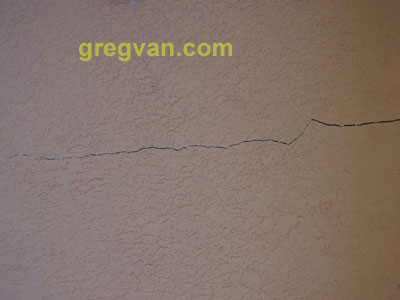Structural Stucco Crack

Whenever you see a structural stucco crack like
this, there is definitely some structural movement in the home.
Something like this usually isn't going to be the stucco contractors
fault, but mother nature's.
This isn't what I would consider to be a hairline crack, which wouldn't
be a big problem in the stucco. There's a good chance that a crack like
this will continue to get larger over time.
Now you're probably wondering, what would cause the house to move and
then the stucco to crack like this. One of the biggest problems that
home builders face today is expansive soil and other soil related
problems.
If the ground below the house is unstable in any way, your home is going
to suffer, eventually. Usually when builders need to move a lot of dirt
to actually form the building lots that your home is built on and the
ground isn't compacted correctly, you could have soil settlement and
erosion problems, causing the house or sections of the house to sag.
Extreme climates can also cause problems like this. If moisture is
already inside of the stucco wall as temperatures drop below freezing,
the moisture inside of the stucco can expand and contract, causing
stucco cracks.
Home Repair Tip: Since a structural stucco crack can become larger over
time, it wouldn't be a bad idea to fill the cracks with a good silicone
caulking. This way if the crack becomes larger, you can continue to fill
it with more caulking. To prevent water that accumulates on the walls,
from working its way onto the other side of the stucco where it can do
interior home damage.
Whatever you do, don't repair the stucco damage right off the bat,
because if the house settles more, you will find yourself with a new
crack and repairing the stucco damage again and again. If the crack
doesn't become larger after two years, you're probably going to be safe
to make the stucco repairs.
If the crack becomes larger than a quarter of an inch wide, you should
contact them
